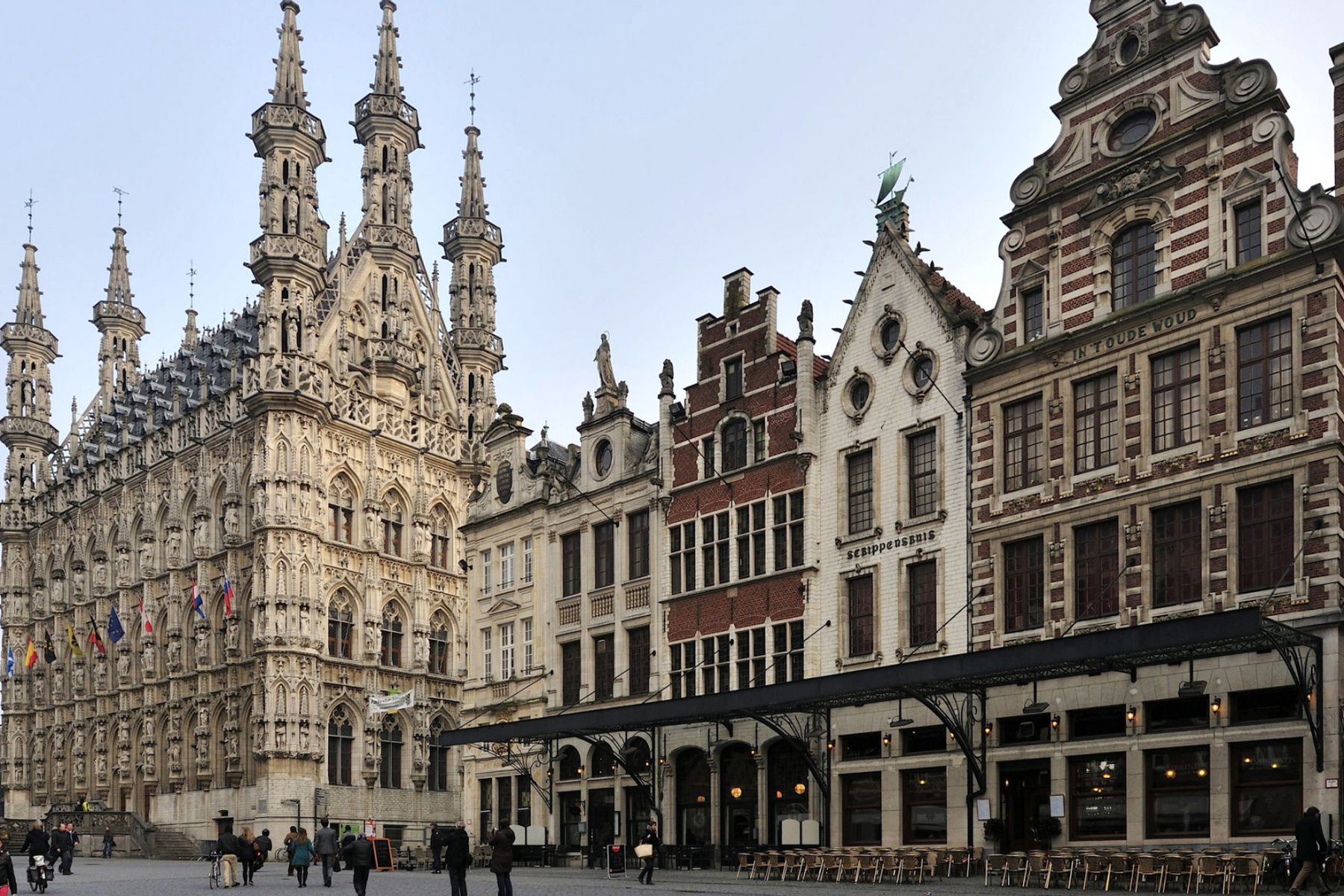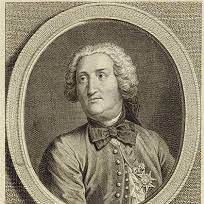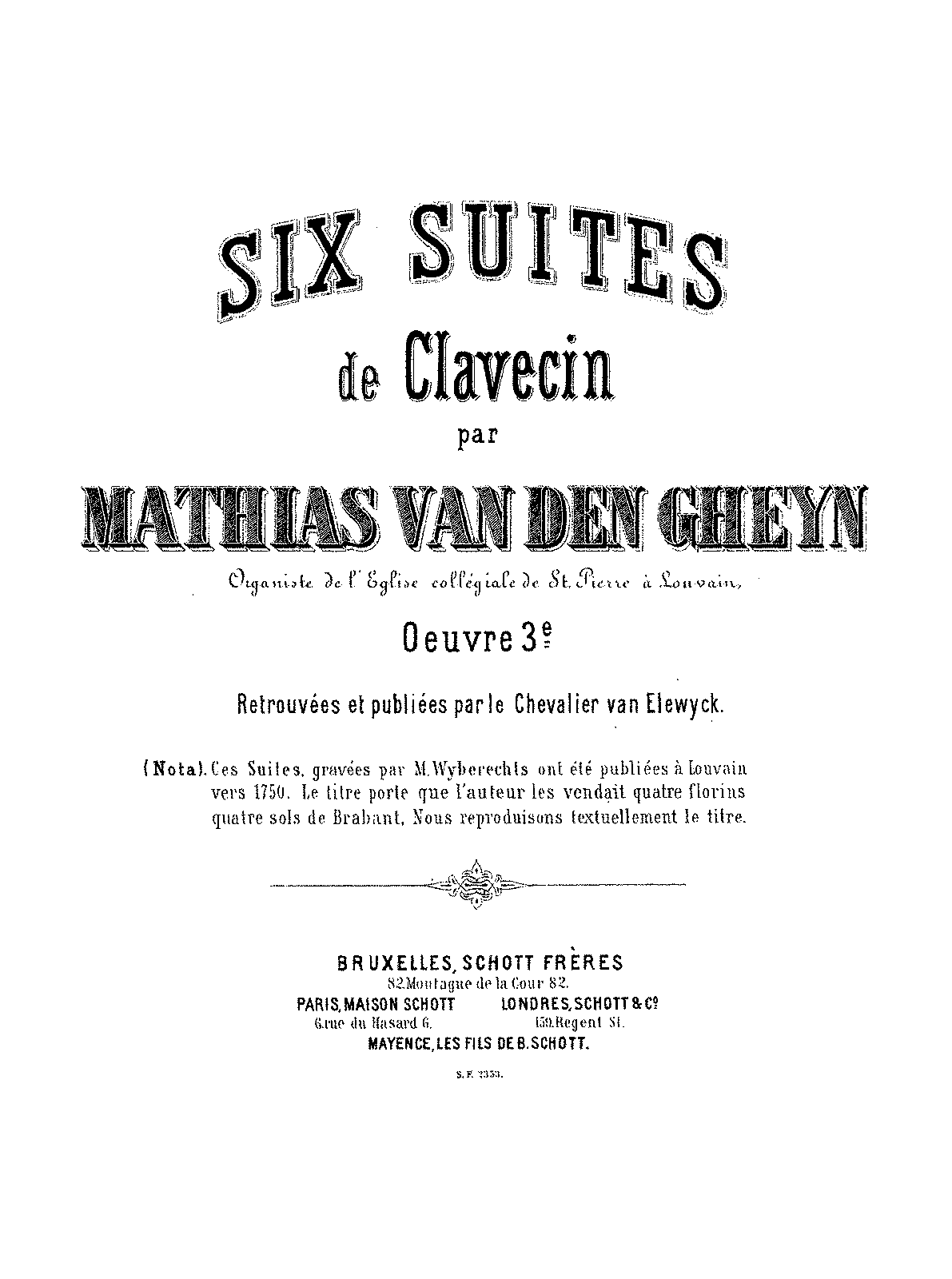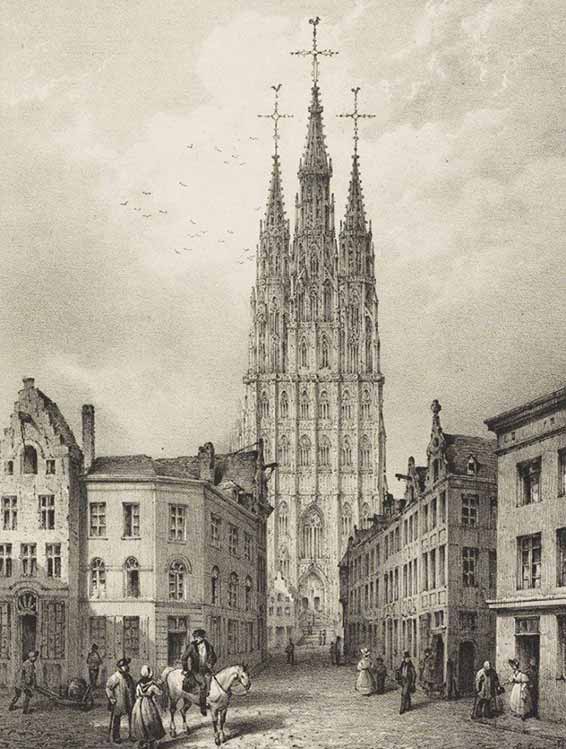

Apart from a few preludes for church bells and individual organ fugues, Matthias van den Gheyn is almost completely unknown today.

It is almost entirely thanks to the music-loving Leuven lawyer Victor-Fidèle van Elewyck that of the over 100 works, extensive harpsichord music by van den Gheyn still survives today.
Born into a very old family of bell founders and carillon players, the 14-year-old began teaching others how to play carillons. When he was barely 20 years old, he was given the position of organist at St. Peter's Church in Leuven, 20 km from Tienen.
It is the largest church in Leuven, directly opposite the Stadhuis. A few years later, in an anonymous competition, he also won the position of the church's bell ringer. Van den Gheyn stayed here for the rest of his life, taught, advised on bells and organ construction, composed over 100 works and had at least 17 children with his wife Anna Catharina Lints.
Matthias van den Gheyn was able to establish himself as a musician in Leuven early on. He is given important musical tasks for the city and is recognized for them. Among the many important public figures in the city who are honored with statues on the facade of the Stadhuis in Leuven, he is the only musician at all.
Charles Burney, who was traveling through Europe, reported from the summer of 1772 that the "bell player" from Leuven was the only one who could compete on the violin with the best violinists in Leuven, such as the bandmaster Willem Gommaar Kennis, whom he actually beat in a violin competition defeated.
Although his preludes for church carillons are probably his most frequently interpreted works today and only a few preludes and fugues for organ can be heard, the most extensive part of his work has hardly or not at all been heard to this day. This is surprising given the consistently high compositional maturity and density of these late baroque works. His late sonatas already reveal many characteristics of the classical style.





